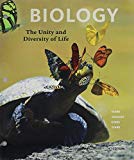
Concept explainers
To explain: Whether the statement “Most species that evolved have already become extinct” is true or false.
Introduction: Extinction is a process of termination of one species or group of species. The species formed get extinct on an ongoing basis.
Answer to Problem 1SQ
Correct answer: The given statement “Most species that evolved have already become extinct” is true.
Explanation of Solution
New species evolve from the older ones. More than 90 percentage of existing species are now extinct. For example, evolved dinosaurs have already become extinct. During the Triassic period, ancestors of dinosaur were evolved from amphibian species. During the Jurassic period, dinosaur’s number increased and by the Cretaceous period, different verities of dinosaurs were evolved. However, during the end of Cretaceous period and beginning of the tertiary period, they become extinct. Thus, the statement is true.
Want to see more full solutions like this?
Chapter 48 Solutions
Bundle: Biology: The Unity and Diversity of Life, 14th + LMS Integrated for MindTap Biology, 1 term (6 months) Printed Access Card
- How much protein should Sarah add to her diet if she gets pregnant? Sarah's protein requirements during pregnancy would be higher. See Hint B2. During calculations, use numbers rounded to the first decimal place. In your answer, round the number of grams to the nearest whole number. _______ g ?arrow_forwardC MasteringHealth MasteringNu X session.healthandnutrition-mastering.pearson.com/myct/itemView?assignment ProblemID=17396422&attemptNo=1&offset=prevarrow_forwardMost people, even those who exercise regularly at low to average intensity (1 hour at the gym or a 2- to 3-mile walk several times per week), do not need an increased protein intake. What would be the protein needs of a man named Josh who exercises moderately and is the same age and size as Wayne? Josh is 5 ft, 8 in tall and weighs 183 lb. Round the number of grams to the nearest whole number. During calculations, use numbers rounded to the first decimal place. Because protein requirement is a range, please enter two numbers: lower and upper range values, respectively. Separate the lower and upper range values, in that order, by a comma. ___, ___ g ?arrow_forwardC MasteringHealth MasteringNu X session.healthandnutrition-mastering.pearson.com/myct/itemView?assignment ProblemID=17396422&attemptNo=1&offset=prevarrow_forwardIf left untreated, most HIV-infected individuals will develop AIDS. Current treatments are focused on highlyactive antiretroviral therapy (HAART). HAART usually consists of an orally delivered drug cocktail containingtwo different reverse transcriptase inhibitors and one other drug, such as a protease inhibitor. Question: Develop a pharmacokinetic model of HAART treatment. Consider all 3 drugs. Make sure to include adiagram that illustrates your thinking, state all assumptions, and define your variables. Whatparameters would you need to know to find the concentration of drug in the plasma? In the T cells?(You do not need to write out or solve any equations.)arrow_forwardnot use ai pleseaarrow_forward(A) 25 20 20 15 NPP (Mg C/ha/yr) 10 10 5 0 0 2,000 4,000 6,000 ECOLOGY 4e, Figure 20.11 (Part 1) 2017 Sinauer Associates, Inc. Average annual precipitation (mm) 8,000arrow_forwardexplain the cascade of events (starting with relaxing trade winds) that occurs during El Niño in the eastern Pacific (off the coasts of California/North America and Peru/South America) and which lead to food-chain collapse - start with changes in the physical/oceanographic conditions, andthen systematically describe the cascading effects at each level of the food chain -arrow_forward3) Which statement(s) about the Pacific Decadal Oscillation (PDO) is/are TRUE? CIRCLE ALL THAT APPLY. A. It is a major driver of salmon populations in the Pacific B. It affects sea surface temperatures in the eastern Pacific C. Its cycles typically do not last as long as those of ENSO D. Evidence that it has occurred over many centuries has been gathered from tree ring dataarrow_forward4.arrow_forward2arrow_forward1. 2. 3. Marine fish cells are hypotonic compared to their seawater environment; their cells lose water by osmosis and gain solutes. If you add heterotrophic respiration and autotrophic respiration together and then subtract that value from gross primary productivity, then you have a more refined estimate of ecosystem carbon storage than NEE. Differential heating due to the earth's tilt generates the global wind AND oceanic circulation patternsarrow_forwardarrow_back_iosSEE MORE QUESTIONSarrow_forward_iosRecommended textbooks for you
 Human Biology (MindTap Course List)BiologyISBN:9781305112100Author:Cecie Starr, Beverly McMillanPublisher:Cengage Learning
Human Biology (MindTap Course List)BiologyISBN:9781305112100Author:Cecie Starr, Beverly McMillanPublisher:Cengage Learning Concepts of BiologyBiologyISBN:9781938168116Author:Samantha Fowler, Rebecca Roush, James WisePublisher:OpenStax College
Concepts of BiologyBiologyISBN:9781938168116Author:Samantha Fowler, Rebecca Roush, James WisePublisher:OpenStax College Biology Today and Tomorrow without Physiology (Mi...BiologyISBN:9781305117396Author:Cecie Starr, Christine Evers, Lisa StarrPublisher:Cengage Learning
Biology Today and Tomorrow without Physiology (Mi...BiologyISBN:9781305117396Author:Cecie Starr, Christine Evers, Lisa StarrPublisher:Cengage Learning Biology (MindTap Course List)BiologyISBN:9781337392938Author:Eldra Solomon, Charles Martin, Diana W. Martin, Linda R. BergPublisher:Cengage Learning
Biology (MindTap Course List)BiologyISBN:9781337392938Author:Eldra Solomon, Charles Martin, Diana W. Martin, Linda R. BergPublisher:Cengage Learning
 Biology 2eBiologyISBN:9781947172517Author:Matthew Douglas, Jung Choi, Mary Ann ClarkPublisher:OpenStax
Biology 2eBiologyISBN:9781947172517Author:Matthew Douglas, Jung Choi, Mary Ann ClarkPublisher:OpenStax
 Human Biology (MindTap Course List)BiologyISBN:9781305112100Author:Cecie Starr, Beverly McMillanPublisher:Cengage Learning
Human Biology (MindTap Course List)BiologyISBN:9781305112100Author:Cecie Starr, Beverly McMillanPublisher:Cengage Learning Concepts of BiologyBiologyISBN:9781938168116Author:Samantha Fowler, Rebecca Roush, James WisePublisher:OpenStax College
Concepts of BiologyBiologyISBN:9781938168116Author:Samantha Fowler, Rebecca Roush, James WisePublisher:OpenStax College Biology Today and Tomorrow without Physiology (Mi...BiologyISBN:9781305117396Author:Cecie Starr, Christine Evers, Lisa StarrPublisher:Cengage Learning
Biology Today and Tomorrow without Physiology (Mi...BiologyISBN:9781305117396Author:Cecie Starr, Christine Evers, Lisa StarrPublisher:Cengage Learning Biology (MindTap Course List)BiologyISBN:9781337392938Author:Eldra Solomon, Charles Martin, Diana W. Martin, Linda R. BergPublisher:Cengage Learning
Biology (MindTap Course List)BiologyISBN:9781337392938Author:Eldra Solomon, Charles Martin, Diana W. Martin, Linda R. BergPublisher:Cengage Learning
 Biology 2eBiologyISBN:9781947172517Author:Matthew Douglas, Jung Choi, Mary Ann ClarkPublisher:OpenStax
Biology 2eBiologyISBN:9781947172517Author:Matthew Douglas, Jung Choi, Mary Ann ClarkPublisher:OpenStax